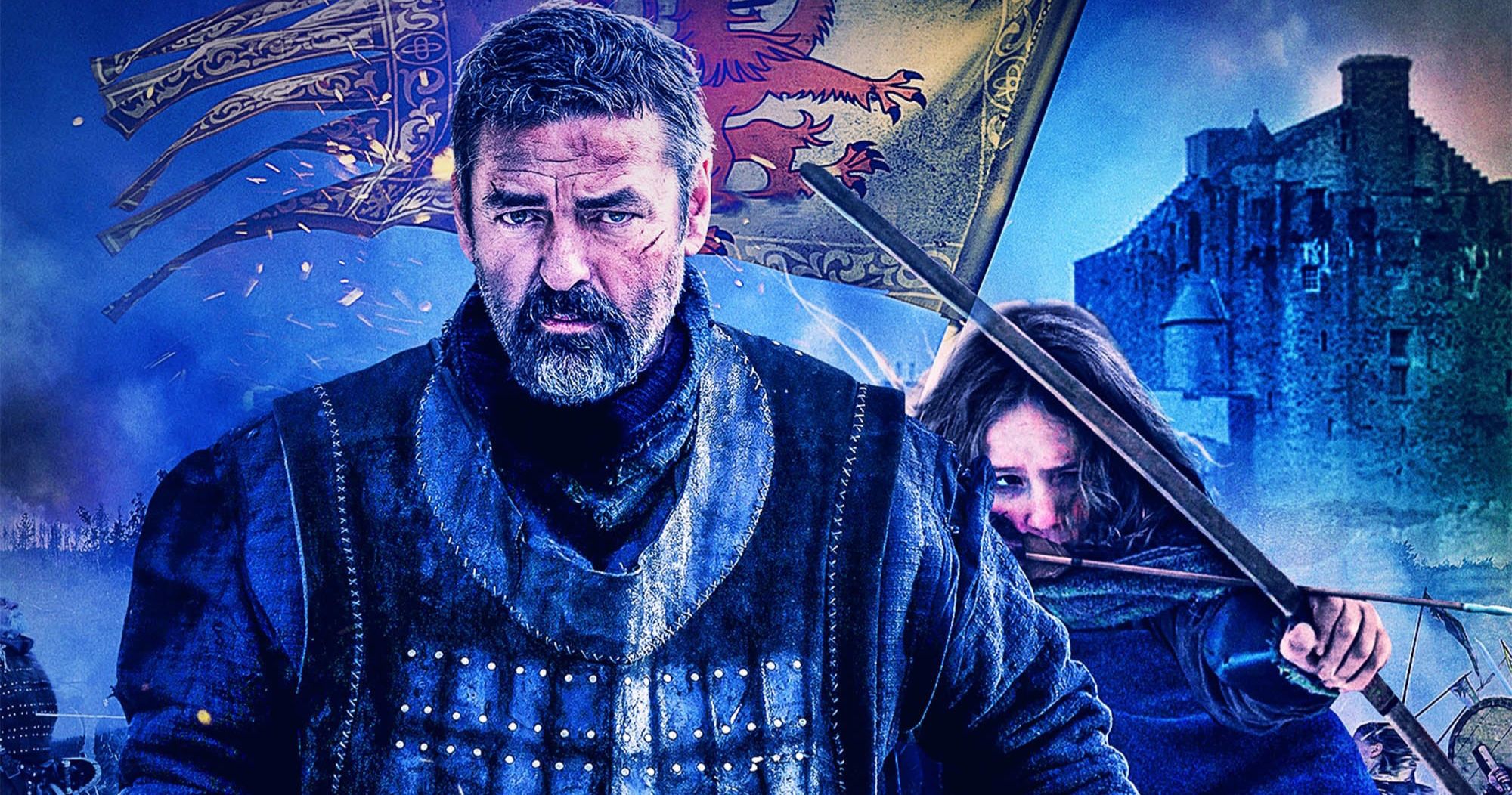Angus Macfadyen reprises the king of Scots who forged his career as a young actor. Robert the Bruce is not a direct sequel to 1995's epic Braveheart. It is a personal story of his journey after the death of William Wallace. Robert suffered years of defeat before forcing the English army out. The film is an homage to the clan families that fought and died supporting him. Robert the Bruce is beautifully shot, but sluggish and meandering. It never musters the gravitas and spirit of Scottish independence.
In 1304 Scotland, a bleak winter dawned. Robert the Bruce (Angus Macfadyen) had finally given up the fight. He was a defeated man. Hiding in the woods with the last remnants of his supporters. He'd seen nothing but death and retreat fighting the English. Robert tells his hardscrabble army to go home to their wives and children. Several want to fight on with their king. Others lost their courage long ago. All they see is the fifty gold coins bounty on Robert's head.
Meanwhile on a highlands farm, the widow Morag (Anna Hutchison) tells her young son (Gabriel Bateman) about his father. He died fighting for Robert the Bruce and Scotland's freedom. Morag watches over her orphaned nephew (Brandon Lessard) and niece (Talitha Bateman). She also rebuffs the advances of her brother-in-law (Zach McGowan), the village sheriff. Morag's children find an injured man in the snow covered forest. She immediately recognizes her king, and makes the fateful decision to help him.
Robert the Bruce is a small, character driven film. There are no huge battles or limb hacking carnage. The swordplay is relatively bloodless and fleeting. It does not have the violence or intrigue of Braveheart. Angus Macfayden, who also co-wrote and produced, focuses on the sacrifices of families. Robert is almost a figurehead here. He says very little and is injured for most of the runtime. Morag and her children have the vast majority of dialogue. Their strength rekindles his flame of rebellion. It's a poetic approach that unfortunately misses. Robert playing second fiddle isn't compelling. He needed to be more present and engaged in the narrative.
The cinematography is the film's best aspect. It is both sweeping and confined. Grand vistas of the snow covered mountains are juxtaposed against the confines of the candlelit cabin. We see the actors' frosty breath in the chilling cold. They struggle to move around in the thick snow. Their peasant rags barely provide warmth. This is also true during the scant action scenes. The filmmakers use the environment skillfully. Robert the Bruce sells the Scottish setting, just not the primary character.
Robert the Bruce leaves a lot to be desired. You can't help but watch with Braveheart expectations. It has a completely different tone. That's not an issue if the story delivers. The film places way too much emphasis on the secondary characters. Robert the Bruce is barely seen in the first act; then does nothing consequential from that point on. The film could have been titled "Morag the Widow Saves Scotland." Robert the Bruce is a production of Yellow Brick Films. It is available now digitally and on demand from Screen Media.

